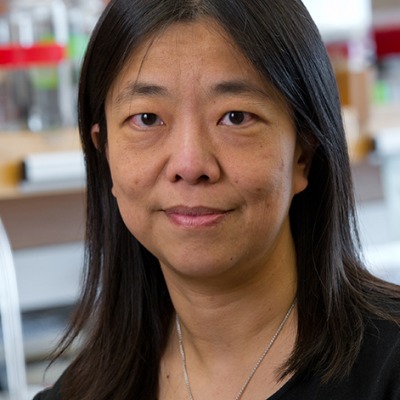Vivian Cheung, M.D.


Vivian Cheung, a pediatrician, joined the LSI in 2013 from the University of Pennsylvania School of Medicine.
Cheung says she is often frustrated about how little knowledge in basic research has been translated into patient care. She is especially interested in a disorder called ataxia telangiectasia, a genetic disease that first appears in young children. It presents particular challenges to doctors because children with the disease—characterized by neurological problems, immunodeficiency, and cancer—can react very differently to treatment. “Many patients suffer side effects from the therapy we give them,” she says. “How do we make sure we do more good than harm?”
Cheung wants to create a genetic tool that will give physicians the information they need to make better decisions. Such a test, built from genetic data from her own studies, would predict a patient's response to the most commonly prescribed therapeutics to “guide physicians and patients in selecting therapeutic options and designing preventive care,” she says. Genetics should be a “foundation of predictive and preventive medicine,” she says, not just a “medical subspecialty.”
Cheung studies the effects of genotype — the sequence of DNA letters on a person's chromosomes — or phenotype — a person's observable traits. But the phenotypes she studies are unusual. She uses DNA microarray technology to measure the expression levels of genes in a cell. “Gene expression is a very convenient phenotype, because we can take a large number of measurements quickly using microarrays,” she says. “And understanding gene expression has a direct impact on disease, since disease is almost always associated with an aberration of gene expression.”
Cheung and her colleague Richard Spielman at the University of Pennsylvania have done a large study linking differences in DNA sequences to differences in gene expression. Using extensive genetic data collected from families and from the International HapMap Project, which has catalogued genetic differences among people from Asia, Africa, and Europe, they identified thousands of places in the genome that affect gene expression. Many of these regulatory regions are quite distant from the genes they help control.
Now Cheung's group is working to apply this knowledge directly to medical practice. They are studying how gene expression changes in response to various therapeutic agents, such as drugs and radiation, in cells from different individuals. They then connect the differences in responses that they observe to sequence variations in the regulatory regions. The result will be a map of regulatory regions that can be used to predict how a person will react to a given drug or treatment. Cheung wants to use information from this kind of basic science research to guide diagnosis and treatment of diseases so that a doctor will no longer have to start a patient on one drug and wait for a reaction to decide whether to continue the drug or try something else.
Ultimately, Cheung would like to see genetic tests become an essential component of medical care. “My dream is that eventually everyone will have a genetic test done, so we'll know how best to treat that person.”